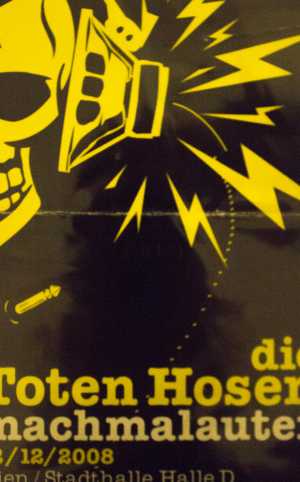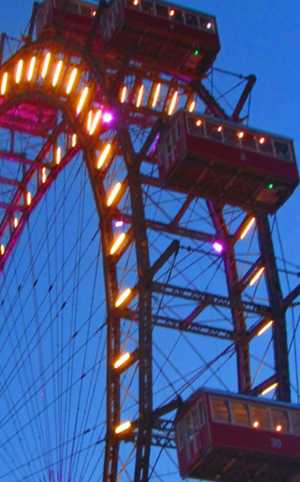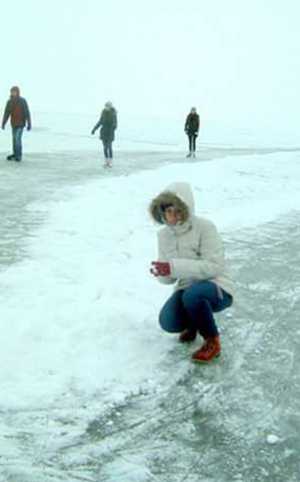Vienna, now and forever. A city of kings and queens, great empires and culture that is recognized throughout the world. There are many people who will say that I am crazy but the Austrian capital must be visited during the winter. It is covered in white, the temperature is glacial, but it’s worth it.

The first European winter
The first time I visited the Austrian capital was also the first time I faced the concept of a European winter. At that time, I lived in Madrid and the Spanish weather had not prepared me enough.

I decided to go to a concert, to see one of my favorite bands, Die Toten Hosen (German punk band). This was going to be a memorable weekend.
At that time, I didn’t know anything about Austria and much less about its capital, but I soon realized that this city vibrates with history.
It is an ideal city to spend an unforgettable weekend visiting its historic center, its incredible palaces and interesting museums.
The first thing I did was to buy a travel guide, to be able to have some kind of basic information. This included some words and phrases in German (at the time I didn’t speak it). The best thing, according to my personal criteria, is to start with a bit of history.
This city has always been the center of attention of royalty and the cradle of world culture. The streets of Vienna are plagued with Roman and Barbarian memories. The first settlers were the Celts five centuries B.C. Then, the Romans gave the name of the white city “Vindobona”.

It was not until the end of the 7th century when it was conquered by Charlemagne and he added it to his empire, naming it “East Mark”, a fact that was considered the birth of Austria. In 1237 it was declared an imperial city.
Well, then I think it has become clear that real families and people of great power felt special attraction for this city. And, it’s truly enchanting.
The discovery of the city
Continuing with my discovery of this city, I think you have to discover this cultural gem in parts since in this way you can appreciate it much more.
One of my greatest discoveries was the antique market of Naschmarket (Metro station Kettenbrückengasse). It is a place where you can find all kinds of objects both new and used. And then, I was really hungry and the food market was a great option. The truth is that being surrounded by bars and shops with fruits and extravagant products is a delight.
But culture is not just a plate of food. Art is undoubtedly one of the pillars of culture and the poetic ambient of the Austrian capital.
During the thirteenth century the city was protected by a wall. In 1857 its demolition began in order to give more space to the city and in its place the Ringstrasse was built. This is the most important avenue in the city and was built in the same place where the old wall was located.
This avenue can be crossed by tram. The low cost version is to take the number 1 and 2 trams, which pass through most tourist points and whose ticket costs 2.20 euros.

The Vienna Parliament was built as part of the Ringstrasse renovation project. It is a huge building with neoclassical style that began its construction in 1874 and a decade later it was finished.
It is interesting to learn that it was designed with a style called Historicism. The intention was that its construction would remind ancient Greece as the cradle of democracy.
This is a city in which there are several palaces, some of them are: Schönbrunn, Hofbug and Belvedere.
The Schönbrunn Palace, built in the 17th century, was for many years the summer residence of the imperial family of Vienna. Both the interior and its gardens are worth a visit.
The Hofburg Palace has been the place of residence of the Habsburgs for more than 600 years. It is currently the most visited place in Vienna.

It is a huge architectural complex that spans a wide area. From imperial chambers, museums, chapel, church, the Austrian national library, the winter riding school and the office of the Austrian president.
Finally there is the Belvedere Palace. It was built as the summer residence of Prince Eugene of Savoy. Currently, it houses an art museum.
After the palaces I would say that the fabulous Museumquartier cultural center is essential.
I want to make it clear that for many people visiting Mozart’s house is not essential, but it was something that attracted my attention.
The Secession Museum contains some of Klimt’s works. And, it’s worth it to dedicate some time to this great artist. Gustav Klimt was an Austrian symbolist painter, and one of the greatest representatives of the modernist movement of the Viennese secession. Klimt painted canvases and murals with a decorated personal style. He also became a very notable figure in Viennese high society.
One of the places that impressed me the most was Heldenplatz (Heroes Square). It is part of the Hofburg Imperial Palace and it was built under the reign of Emperor Franz Joseph I of Austria. The palace gardens are called Burggarten and I was very much struck by their beauty as well as by the stories behind them.
It turns out that when Napoleon‘s troops left Vienna in 1809, disorder and chaos were impregnating everything. In all honesty, there was only chaos. As part of them, the private garden for the imperial family was created.

In 1919 it received a new name: Burggarten, referring to the change from monarchy to republic after the First World War.
The garden offers a nice view of all the historical sites, it is a nice way to get rid of the whole crowd of people and you can appreciate some monuments: monument of Mozart, Emperor Francisco, fountain of Hercules.
The Vienna Opera was without doubt one of the most impressive places I saw. For those who do not know, like me at that moment, it is one of the most important opera companies in the world. It is the center of Viennese musical life and one of the poles of attraction of the musical world.
I was impressed, although it was not surprising that during World War II, on March 12, 1945, the building suffered an aerial bombardment and then a fire that completely destroyed the stage and the spectators’ room.
The Vienna cathedral is also called Stephansdom. It is the most important religious symbol of Vienna. It was built on the ruins of a Romanesque church dedicated to San Esteban. The cathedral is crowned by a large needle-shaped tower that is built in Gothic style with 137 meters high. Obviously it is possible to see it from different points of the city. And, although I would like to say that I went up the stairs, the truth is that I did not do it.
After a very long walk around this magnificent city I arrived at the House of Mozart. Between the years 1784 and 1787, Mozart lived with his family in this apartment on Domgasse Street.
You can learn interesting facts about the years that Mozart spent in Vienna, the places where he performed, who his friends were, his relationship with the freemasons or the great passion he had for the games.
Vienna at night is a charm
Vienna at night is a charm. The streets are filled with joy and festivities, both for young people and for the high society. It is like a fantasy: they hold gala dances to celebrate holidays and remember the wonderful history that made it one of the best cities in the world.
I have to say that Vienna is not a cheap city, but it is always possible to save some money taking into account some details.
I think everything depends on the places you want to visit. Then, it is advisable to use hand and tourist cards. The two options are: Vienna pass and Vienna card.
The cold I felt did not stop me from going through this European wonder. The truth is that this city falls in love with everything in it.

I noticed several things. The first is that Vienna is the capital of classical music. Great composer like Strauss, Beethoven and Mozart were born here. The second, Vienna is a romantic city which makes it advisable not to travel alone.
The Viennese, are very accustomed to the winter rigor, and for this reason the city remains active even in the moments when the climate is most icy. The city does not stop vibrating with activity.
The snow and ice of winter give rise to a totally different image than what is seen during the summer.
I think few people plan to travel to Vienna in winter as the temperatures reach well below low zero. However, those snowy landscapes do not stop calling our attention.
Yes, the cold is frightening and goes through all the spaces but that is not an excuse. You have to be warm. You do not need millions of layers, just the right layers. In conclusion, there are plenty of reasons to travel to Vienna: it is one of the most beautiful and majestic cities in Europe, with an incomparable history and culture, the cradle of music and some movie palaces (literally).


